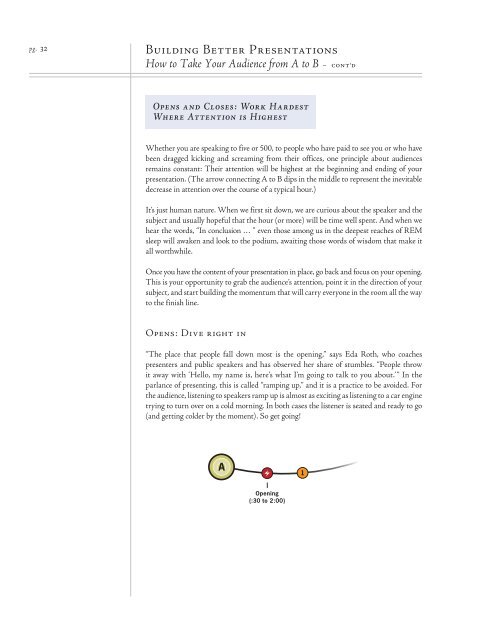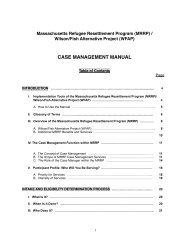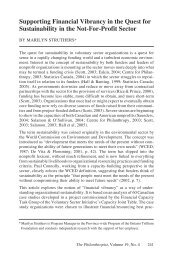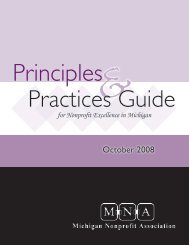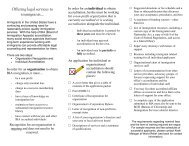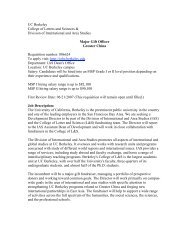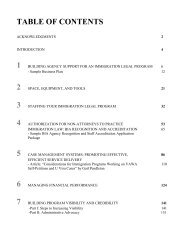Why Bad Presentations Happen to Good Causes - The Goodman ...
Why Bad Presentations Happen to Good Causes - The Goodman ...
Why Bad Presentations Happen to Good Causes - The Goodman ...
You also want an ePaper? Increase the reach of your titles
YUMPU automatically turns print PDFs into web optimized ePapers that Google loves.
pg. 32<br />
Building Better <strong>Presentations</strong><br />
How <strong>to</strong> Take Your Audience from A <strong>to</strong> B – cont’d<br />
Opens and Closes: Work Hardest<br />
Where Attention is Highest<br />
Whether you are speaking <strong>to</strong> five or 500, <strong>to</strong> people who have paid <strong>to</strong> see you or who have<br />
been dragged kicking and screaming from their offices, one principle about audiences<br />
remains constant: <strong>The</strong>ir attention will be highest at the beginning and ending of your<br />
presentation. (<strong>The</strong> arrow connecting A <strong>to</strong> B dips in the middle <strong>to</strong> represent the inevitable<br />
decrease in attention over the course of a typical hour.)<br />
It’s just human nature. When we first sit down, we are curious about the speaker and the<br />
subject and usually hopeful that the hour (or more) will be time well spent. And when we<br />
hear the words, “In conclusion … ” even those among us in the deepest reaches of REM<br />
sleep will awaken and look <strong>to</strong> the podium, awaiting those words of wisdom that make it<br />
all worthwhile.<br />
Once you have the content of your presentation in place, go back and focus on your opening.<br />
This is your opportunity <strong>to</strong> grab the audience’s attention, point it in the direction of your<br />
subject, and start building the momentum that will carry everyone in the room all the way<br />
<strong>to</strong> the finish line.<br />
Opens: Dive right in<br />
“<strong>The</strong> place that people fall down most is the opening,” says Eda Roth, who coaches<br />
presenters and public speakers and has observed her share of stumbles. “People throw<br />
it away with ‘Hello, my name is, here’s what I’m going <strong>to</strong> talk <strong>to</strong> you about.’” In the<br />
parlance of presenting, this is called “ramping up,” and it is a practice <strong>to</strong> be avoided. For<br />
the audience, listening <strong>to</strong> speakers ramp up is almost as exciting as listening <strong>to</strong> a car engine<br />
trying <strong>to</strong> turn over on a cold morning. In both cases the listener is seated and ready <strong>to</strong> go<br />
(and getting colder by the moment). So get going!<br />
A<br />
Opening<br />
(:30 <strong>to</strong> 2:00)<br />
1


